Many people wonder nowadays, how will the world look or be like by 2050? More specifically, how will logistics and supply chain look like by 2050?
Predicting the future is simply impossible. However, based on the current socio-economic, technological and political trends, calculated guesses can be made. Let’s first start with what does exactly mean to predict the future. Lao Tzu, an ancient Chinese philosopher born in 604 BC, once said that “Those who have knowledge, don’t predict. Those who predict, don’t have knowledge”. On the other hand, Albert Einstein said that “I never think of the future, it comes soon enough”. Therefore, many views on predicting the unpredictable.
According to DHL’s report “Logistics 2050: A Scenario Study“, published in 2012, five scenarios were created, in order to paint the picture of our potential future. These scenarios are the following:
- Scenario 1: Untamed Economy – Impending Collapse;
- Scenario 2: Mega-efficiency in Mega Cities;
- Scenario 3: Customised Lifestyles;
- Scenario 4: Paralysing Protectionism;
- Scenario 5: Global Resilience – Local Adaptation
Scenario 1: Untamed Economy – Impending Collapse
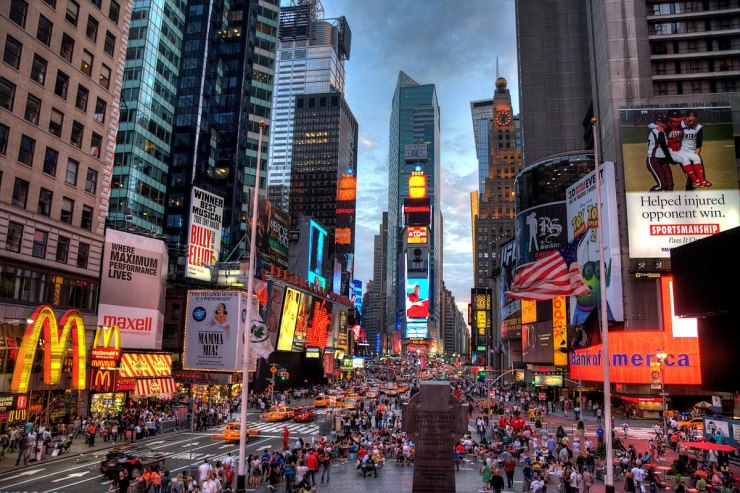
In the first scenario, a continuous economical development is expected. The predictions are that the global population will reach 9.77 billion people by the year of 2050, and thus, the demand for logistics will dramatically increase.
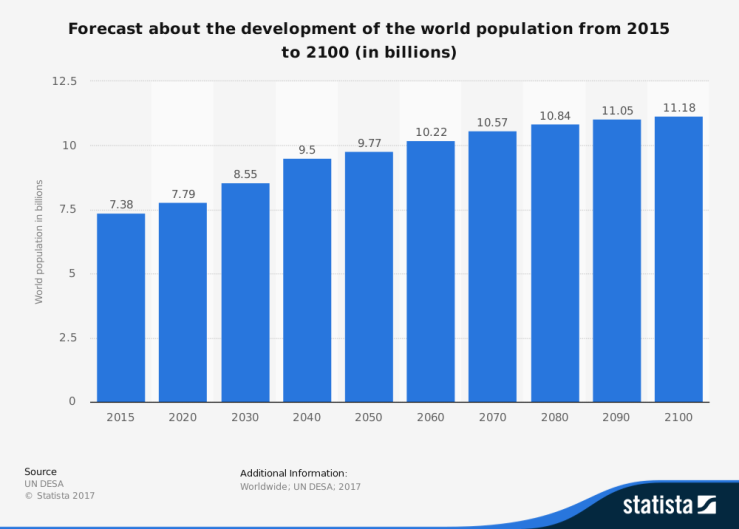
Additionally, the average annual percentage change in GDP, for the entire world, will see significant development in India and China, with GDP growth ranging from above 6% in the period 2014-2020 for both, to above 4% and almost 3% by 2050, respectively, according to PwC, based on their report “The World in 2050“.
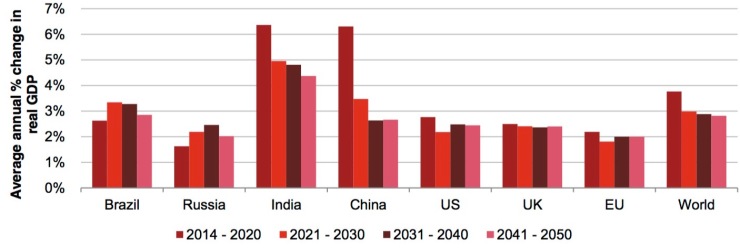
Furthermore, the main economic stimulant is the increase in global world trade. According to the HSBC together with Oxford Economics report “Trade Winds” it is predicted that the total world trade will increase dramatically, by quadrupling to reach a value of $68.5 trillion by 2050. The main growth regions in world trade are China with 29% and the European union with 22%.
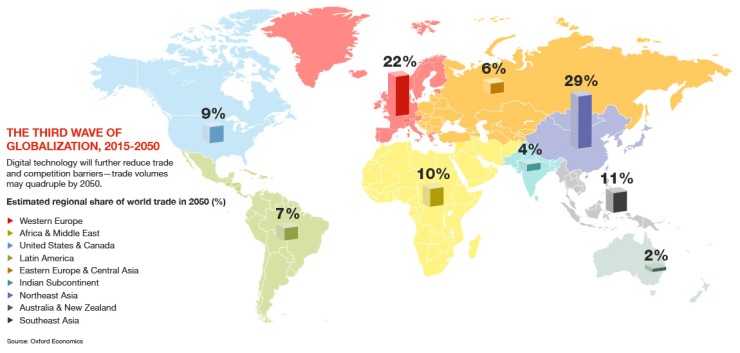
The first scenario key points are that:
- The world population and economy grows significantly;
- Massive increase in demand for supply chain, maritime, air and express logistics;
- New networks due to higher energy prices, outsourcing, offshoring and weather events.
Scenario 2: Mega-efficiency in Mega Cities
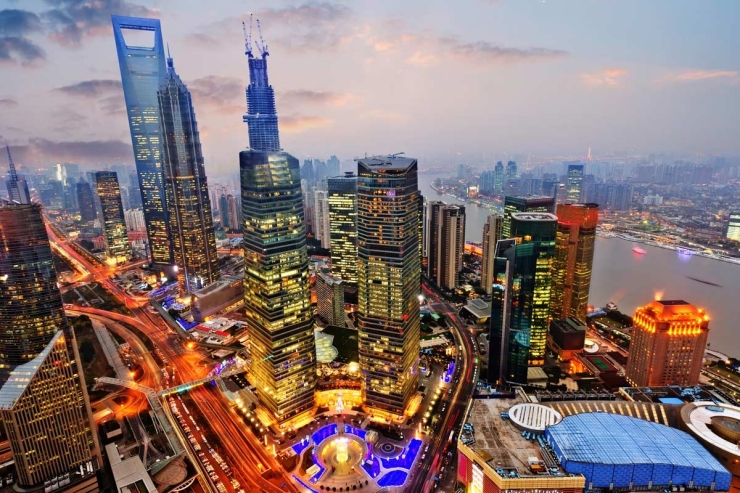
The creation of mega cities is due to two main factors: high urbanisation rate and technological development. The global urbanisation levels, reveal interesting results. According to Statista, the urbanisation levels, by living population, will grow highest in Asia and Africa, while in Europe, Northern & Latin America, and Oceania will not change significantly by 2050.
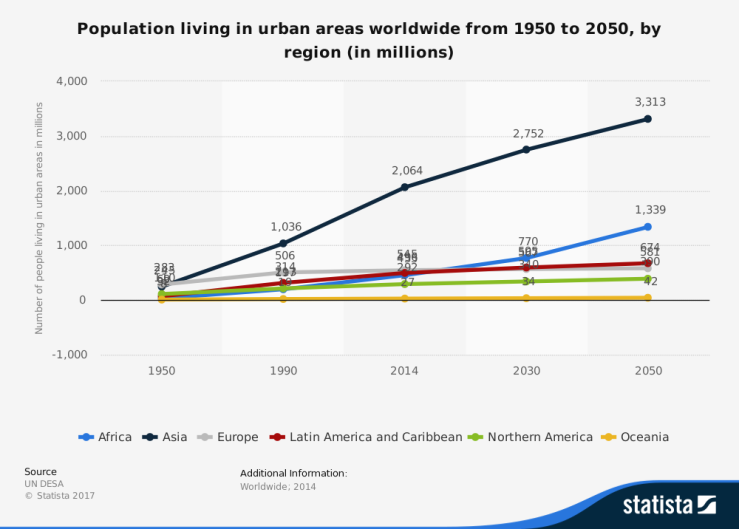
The high urbanisation levels in Asia and Africa lead us to the key points of this scenario:
- Underground cargo transportation via cargo tube systems;
- City Logistics will include running the city utilities networks;
- Megacities are connected via direct freight lanes;
- New transport used: self-driving vehicles based on hydrogen or electricity;
- New loading units used: giga-liners, larger aircrafts, larger cargo trains;
- Dematerialisation of consumption: shared or rented logistics services (vehicles, warehouses) & safe data exchange.
Scenario 3: Customised Lifestyles

In this scenario the mass-production products disappear. The new trend of mass-customisation appears. This paradigm-shift movement implies customising and creating unique products, according to the customers specific requirements, therefore more individualisation and differentiation in the market.
Mainly the 3D printing technology and machines are performing the mass-customisation tasks. As such, the consumers themselves purchase the 3D printers and create their own products, as the increased-awareness of the global pollution represents a strong motivation for the consumers to create sustainable products by themselves. Logistics will have an important role in supporting this new demand,
The key points are:
- Growing demand for 3D printing cartridge raw materials such as: biomaterials, plastic granulates;
- Long-distance transportation for finished & semi-finished goods drops *(incl. air);
- LSP’s manage the physical value chains, as a system integrator being less asset-heavy;
- Last-mile deliveries: critical KPI and competitive advantage for high-quality service;
- Reverse flows grow a lot due to: collection of used products for recycling.
Scenario 4: Paralysing Protectionism
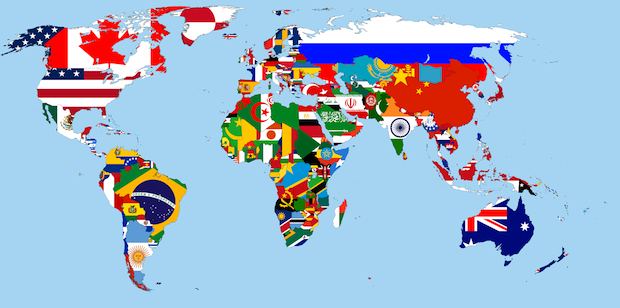
In this scenario the trade among the main global economies is restricted, and even prohibited. Therefore, nationalistic views become the standard and trade, exchanging goods with other countries is limited. The global economy stagnates and even decreases as a result. As such, less trade, means less consumption, means less demand for logistics companies, which loose market share internationally. The environment is hostile to foreign trade / business, dominated by fight and competition over natural resources, scarcity and efficiency. This brings us to the following key points of Scenario 4:
- Regional domestic market logistics companies arise as main players;
- Local road & rail transport increase, while ocean & air transport decrease;
- Global trade and cargo volumes drop significantly worldwide;
- Customs becomes strict, complex, time-consuming;
- Repair & Return flows increase.
Scenario 5: Global Resilience – Local Adaptation
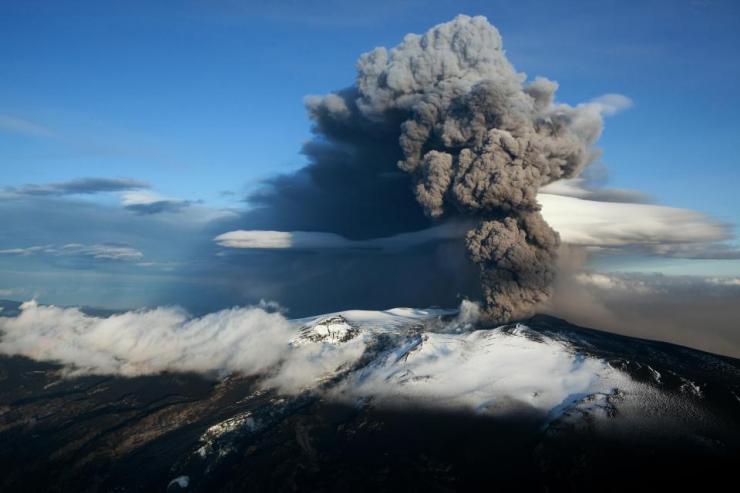
The global landscape is threatening the human life on earth. Due to the heavy and extensive use of natural, non-renewable energy sources, and the continuous growing global demand, the global warming effects are felt, together with increased global temperature and melting of the ice in both North & South poles. According to the Organisation for Economic Co-operation and Development (OECD), based on their report “Environmental Outlook to 2050“, the global temperature will increase with 2.5˚ Celsius by 2050.
The increased global temperature will result in the occurrence of natural disasters, and extreme weather events, which will cause casualties, asset and environmental damages.
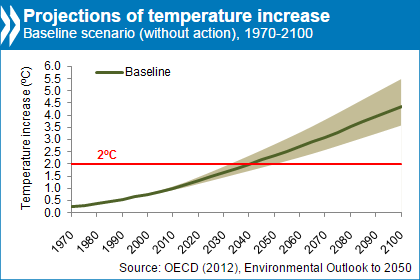
Furthermore, the warmest countries, considering 2050 projections, will be Russia, India, South Africa, Brazil and North-East Canada (>3.5˚ degrees Celsius). Additional important, over-the-average, warmest countries and regions include USA, Australia, North-Central Africa and Central part of South America (2˚- 3˚ degrees Celsius).
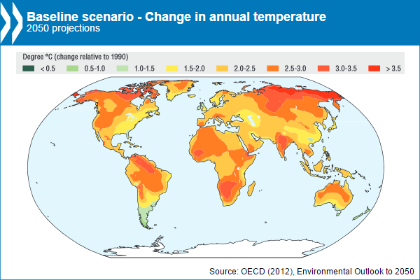
However there are some good news. The natural disasters, and extreme weather events can be mitigated and reduced by investing 5.5% of global GDP in order to reduce the Green House Gas (GHG) emissions by -69.5% according to the OECD and the United Nations “Paris Agreement“, in order to maintain a steady global temeperature increase of below 2˚ Celsius by 2050.
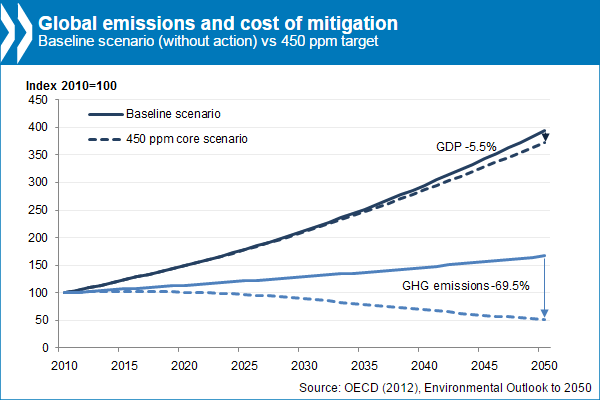
The key points for Scenario 5 are:
- Supply security is a top priority;
- Logistics & Supply Chain resilience and risk mitigation increase greatly;
- Shorter-distances and lower volumes, closer to the main regional manufactures, suppliers and clients;
- Safety stock and capacity buffers are created;
- Flexible transportation modes (Plan B) available in case of disruption;
- Logistics evolves: provides last-mile & technical (repair) services on the spot.
Conclusion
In conclusion the best possible scenario from the five above mentioned is Scenario 2 “Mega-Efficiency in Megacities” due to aspects such as world GDP development, quantity of global flows, environmental quality and transformation intensity for logistics, which are all increasing / rising prospects, just to mention a few.
The worst scenario is Scenario 4 “Paralyzing Protectionism”, due to its dramatic decrease in quantity of global flows and regulatory openness, which basically means that all the major economic regions cut trade among one-another.
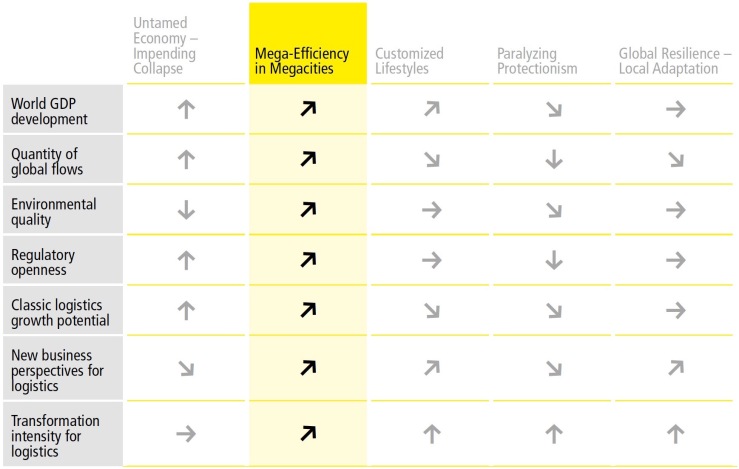
In my opinion DHL’s report is outdated, because it was written in February 2012 and it does not take into account the latest global developments such as Artificial Intelligence, Blockchain, and actual political, socio-economic risks, such as a potential nuclear war between USA and North Korea.
I think that it is normal to calculate and create projections and trends, in order to see the “new horizon”, however, I think that currently that any big-scale natural disaster, political instability, or economic crash event can nullify all the five scenarios and all predictions above mentioned.
My opinion is that the world right now is very fragile, with potential many break-out points and pains. I believe that we should focus on solving the today’s problems by:
- Reducing current most-polluting energy sources;
- Investing into renewable energy sources (wind, water, solar);
- Paradigm Shift: Short-Term (profit & money focused) to Long-Term (global welfare, ensuring resources for future generations.
All-in-all I am just a student and this is my humble opinion. Once I will be in the actual position of contributing, in a tangible way, to the above mentioned three ideas, I can add value to the world and make a difference, and I hope it will not take me too long to get there, before it is too late…